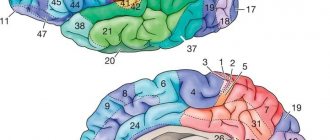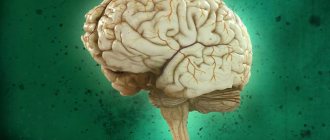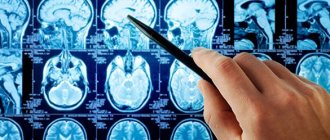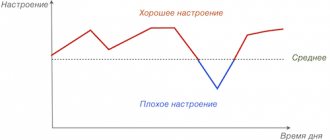What is important to know and understand for people whose loved ones, due to Covid or other diseases, are in intensive care and are connected to special equipment to support life?
Photo: REUTERS
On June 18, 2021, singer MakSim was put into medicated sleep and connected to a ventilator (artificial lung ventilation). On June 28, it became known that the patient was transferred to an ECMO device - in fact, this is an external “prosthesis” of the lungs and heart (see details below). And on August 3, encouraging news came: the artist was taken off ECMO, she is already conscious! A week later she was completely transferred from intensive care to a ward.
What is this - a unique case of salvation, almost a miracle? Or is it not uncommon? What is important to know and understand for people whose loved ones, due to Covid or other diseases, are in intensive care and are connected to special equipment to support life? What are the chances of recovery and returning to normal life? Komsomolskaya Pravda tried to find answers to these questions.
METHOD OF LAST HOPE
“ECMO is the method of last hope for COVID-19 (and not only for this disease. - Ed.), ” writes a cardiac surgeon, head of the operating department of the Center for Cardiovascular Surgery of the Main Military Clinical Hospital named after. N.N.Burdenko Alexey Fedorov. And he explains: the ECMO (extracorporeal membrane oxygenation) device combines an artificial heart and an artificial lung.
This is a relatively small device with a set of hollow tubes called cannulas. The device has two main “units”: a pump and an oxygenator. The first methodically pumps the blood, the second saturates it with oxygen, Fedorov describes. In fact, life is maintained through mechanisms outside the body: the patient’s blood is driven through the apparatus, enriched with oxygen and returned back. To do this, cannulas are inserted into the vessels (into the veins and arteries or only into the veins, depending on medical indications), and the device itself works while located nearby.
The procedure for connecting and managing a patient on ECMO is extremely complex and requires high skill and long-term experience. We need a large team of specialists. “In a regular hospital, it is unreasonable to connect the device. The risk of error and fatal outcome is too high,” notes Alexey Fedorov. According to his calculations, in all of Russia today there are approximately 100 ECMO devices, which are located in specially created centers. One of these centers is equipped in the 52nd City Clinical Hospital of Moscow, where Marina Abrosimova (singer MakSim) has been staying for more than a month and a half. At the same time, about 5% of people with Covid, that is, approximately every twentieth, end up on mechanical ventilation and ECMO. What happens to the body connected to special equipment in intensive care - we talked about this with an experienced resuscitator working in the red zone of one of the Covid hospitals, Candidate of Medical Sciences Georgiy Arbolishvili .
Singer MakSim.
Photo: Evgenia GUSEVA
Literature
- Boisson-Bertrand, Ravussin P. 4th meeting of the anesthesia-resuscitation section of the ORL Department. Lausanne//Ann. Fr. Anesth. Reanim. – 1991.- Vol. 10(1).- 1A-2A.
- Buck M., Blumer J. Opioids and other analgesics: Adverse effects in the intensive care unit // Crit. Care Clin. — 1991.- Vol. 7.- R. 615-637.
- Chollet-Rivier M, Chiolero RL. Anaesthesia for procedures in the intensive care unit. // Curr Opin Anaesthesiol. – 2001 – V. 14(4) – P. 447-51.
- Cohen D., Horiuchi K., Kemper M. et al. Modulating effects of propofol on metabolic and cardiopulmonary responses to stressful intensive care unit procedures // Crit Care Med.- 1996.- Vol. 24.- R.612-617.
- Cohen IL, Abraham E., Dasta JF, Gallagher TJ, Papadakos PJ, Pohlman AS Management of the agitated intensive care unit patient // Crit. Care Med. - 2002. - Vol. 30. – R. 97-123.
- Durbin CGJ Sedation of the agitated, critically ill patient without an artificial airway // Crit. Care Clin. - 1995. - Vol. 11. – R. 913-936.
- Ely E.W. Delirium in Intensive Care Unit: Textbook of Critical Care Fifth Edition MP Fink. E.Abraham, JLVincent, PM Kochanek - Flsevier, 2005.- 2358 p.
- Frye MA, Coudreaut MF, Hakeman SM et al. Continuous droperidol infusion for management of agitated delirium in an intensive care unit // Psychosomatics. - 1995. - Vol. 36. – R. 301-305.
- Harvey M. Managing agitation in critically ill patients // Am. J. Crit. Care - 1996. - Vol. 5. – R. 7-15.
- Kress IP, Lacy M., Pliskin N., Pohlman A. The long term psychological effect of daily sedative interruption in critically ill patients // Am. Respira. With rit. With are Med. - 2001. - Vol. 163. R .954
- Kress JP, Pohlman AS, Hall JB Sedation and Analgesia in the Intensive Care Unit // Am. J. Respira. Crit. Care Med. – 2002.- Vol. 166. – R. 1024-1028.
- Lewis K., Whipple J., Michael K., Quehbeman EJ. Effect of analgesic treatment on the physiological consequences of acute pain // Am. J. Hosp. Pharm. - 1994. –Vol. 51. – R. 1539-1554.
- Liu J., Singh H., White PF Electroencephalographic bispectral index correlates with intra-operative recall and depth of propofol-induced sedation // Anesth. Analg. — 1997. –Vol. 84. – R. 185-189.
- Mehta S. Sedation Strategies in the Critically II // Yearbook of Intensive Care and Emergency Medicine - Edited by JI.Vincent -Elsevier - 2005.- R. 78-
- Milbrandt E.W., Ely E.W. Agitation and delirium. Critical Care. Fifth edition. Finc MR, Abraham E, 2005, chapter 2.
- Park G, Lane M, Rogers S, Bassett P. A comparison of hypnotic and analgesic based sedation in a general intensive care unit. // Br J Anaesth. – 2007. – V.98(1). – P.76-82.
- Rhoney DH, Parker DJ Use of sedative and analgesic agents in neurotrauma patients: effects on cerebral physiology // Neurol. Res. - 2001. –Vol. 23. – R. 237-259.
- Terao Y., Miura K., Saito M., Sekino M., Fukusaki M., Sumikawa K. Quantitative analysis of the relationship between sedation and resting energy expenditure in postoperative patients // Crit. Care Med. — 2003. –Vol. 31(3). - R . 830-833.
- Vinik H. Intravenous anaesthetic drug interactions: practical applications. //Eur. J. Anaesthesiol. Suppl. – 1995. – V.12. –P.13-19.
“THIS IS NOT A COMA AND NOT AN ANESTHESIA”
— Georgy Nodarevich, you can often hear that when connected to a ventilator, patients are put into an artificial or drug-induced coma...
- No, this is a completely wrong idea! We are by no means talking about a coma. This is correctly called medicated sleep. A person falls into a coma due to severe brain damage - after a stroke, traumatic brain injury, etc. When connecting to a ventilator, we put the patient into medicated sleep precisely in order to protect the brain. This is called neuroprotection. In addition, such a dream performs other tasks.
- Which?
— The ventilator partially replaces the function of the lungs and helps them breathe. To do this, a special tube connected to a ventilator is inserted into the patient's trachea through the throat. It's painful and uncomfortable. And in this state, as a rule, you can stay for quite a long time, sometimes up to several weeks, or even months. That's why we use sedatives and pain relief. With their help, medicated sleep is supported.
- Is it like anesthesia?
— Narcosis is a broader concept. First of all, it involves powerful pain relief. After intubation (insertion of a tube into the trachea) for mechanical ventilation, the constant administration of very strong painkillers is usually not required. We use milder means, usually you can get by with one drug that will induce sleep and the person will be comfortable. The patient's consciousness turns off, he sleeps and does not feel any unpleasant sensations.
— So, patients on mechanical ventilation are always unconscious?
- At first, as a rule, yes. If breathing support with mechanical ventilation needs to be provided for a long time - on average longer than 5-7 days - the patient is given an incision in the throat and a tracheostomy tube is inserted. Artificial ventilation through it is much more comfortable for a person than mechanical ventilation through an endotracheal tube, which is inserted at the initial stage (see above). For some patients, a tracheostomy tube even allows them to feed themselves (not just through a tube) and generally significantly reduces discomfort. In some cases, a decision may be made to partially withdraw from medicinal sleep. A person can be conscious and active while still in the intensive care unit.
Main indications for the use of sedation
Sedation is a technology whose use is justified:
- For patients experiencing severe fear and panic of dentists and dental treatment;
- With a low pain threshold;
- With a pronounced gag reflex that can prevent the doctor from performing all the necessary manipulations;
- With a significant volume of procedures to be performed during treatment. For example, dental sedation will allow treatment of multiple caries and dental implantation without pain and discomfort;
- In case of traumatic dental intervention. Sedation in dentistry can be used for complex tooth extractions - a lengthy operation that involves making incisions in the gums and other complex manipulations. Tooth extraction under sedation will be painless.
Dental treatment under sedation is also recommended for patients suffering from diseases of the heart and cardiovascular system. People with these conditions may experience severe anxiety before visiting the dentist's office and procedures, which can be completely eliminated by sedation. Quite often, sedation is used when dental treatment is necessary in children. The technique ensures the little patient’s perseverance in the chair, and in addition, it will relieve them of tears, fear and stress, and will help to form the right attitude towards dental treatment in the future. If treatment at an early age is not associated with negative emotions, then dentophobia (fear of dental treatment) will not arise in adulthood.
DOES THE BRAIN SUFFER?
— People often worry: if a patient has been on a ventilator or been in a medicated sleep for a long time, then some brain functions may fail: memory, the ability to control his arms and legs. It happens?
- Understand: artificial ventilation itself has no direct negative effects. This is a supportive, protective, therapeutic method that allows you to partially replace the function of the lungs until they can’t cope on their own. As for the brain, as I said, medicated sleep creates additional protection against damage to nerve cells primarily due to lack of oxygen, poor circulation, and severe inflammation.
Another thing is that the infection itself, a coronavirus or another pathogen, can penetrate the brain tissue and infect it. Also, severe inflammatory processes that are triggered in the body in response to the spread of coronavirus can lead to the destruction of nerve cells during COVID-19. Plus, the patient’s brain may suffer from hypoxia (lack of oxygen) even before being connected to a ventilator. All this can negatively affect cognitive abilities. But it is drug-induced sleep that does not produce such consequences, as is often mistakenly imagined. Again, it acts as a protection against further brain damage.
WHAT HAPPENS TO THE KIDNEYS
— If we talk about other organs besides the brain, what happens to them when a person is connected to a ventilator?
— Since this is a method that replaces lost lung function, there are no direct damaging effects on other organs. Another thing is that during a long stay on mechanical ventilation, especially in patients with severe Covid, complications of the underlying disease may develop, so-called secondary infections may occur, asthenia develops, etc.
— Is it true that patients on mechanical ventilation are also connected to an artificial kidney machine?
— No, if a person initially does not have severe kidney disease that requires such a method, then an artificial kidney (in medical language this is called renal replacement therapy - RRT) is not used. For critically ill patients in the intensive care unit, special catheters are installed to ensure normal urine flow and calculate the rate of diuresis (that is, the volume of urine that the patient excretes over a certain amount of time). We constantly monitor this. Ventilation does not directly affect kidney function.
QUESTION ON THE TOPIC
Can vocal cords be damaged?
— Georgiy Nodarevich, when a patient on mechanical ventilation is left with a tube in the trachea for a long time or an incision is made in his throat to install a tracheostomy, can the vocal cords or some other elements be damaged, which is why the person subsequently will not be able to talk or sing?
“When patients are immobilized for a long time and the vocal cords do not work, then after the tube is removed, it is difficult for people to speak for some time. But this, as a rule, is easily restored, and serious problems do not arise in the future.
Can everyone use sedation: consider contraindications
Even the safest medical techniques have contraindications and limitations for use. Sedation is no exception; it cannot be used:
- For hypertension, hypotension;
- With diagnosed neurological and mental diseases;
- In severe pathological processes affecting the respiratory system.
Do not resort to sedation for any acute infectious diseases.
To exclude possible contraindications to the technique, before using sedation, a comprehensive examination is carried out, tests are prescribed, the patient himself must be frank with his doctor and honestly and in detail tell about all the diseases in the anamnesis, the presence of allergic reactions, and his condition at the current moment in time.










